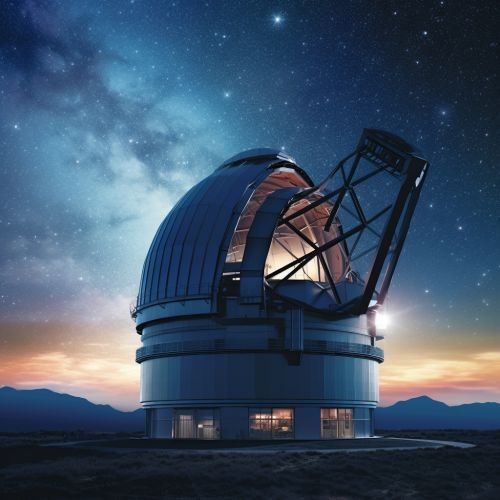Astronomy
Introduction
Astronomy is a natural science that studies celestial objects and phenomena. It uses mathematics, physics, and chemistry in order to explain their origin and evolution. Objects of interest include planets, moons, stars, galaxies, and comets; while the phenomena also include supernova explosions, gamma ray bursts, and cosmic microwave background radiation. More generally, all phenomena that originate outside Earth's atmosphere are within the purview of astronomy.


History of Astronomy
The history of astronomy is a vast and varied one, as humans have been looking up to the skies for thousands of years. From the ancient Greeks and Babylonians to the modern day scientists, the study of the heavens has been a constant pursuit for mankind. The history of astronomy is filled with remarkable discoveries and incredible advancements in technology.
Branches of Astronomy
Astronomy is a broad field and is divided into several branches, each focusing on a specific area of study. These include:
- Astrophysics: This branch studies the physical properties and processes of celestial bodies and the regions of space between them.
- Cosmology: This branch is concerned with studying the universe as a whole, including its origins, evolution, and eventual fate.
- Planetary Science: This branch focuses on studying planets, both within our solar system and beyond.
- Stellar Astronomy: This branch is focused on the observation of stars and their evolution.
- Galactic Astronomy: This branch studies our own galaxy, the Milky Way, and its structure and components.
- Extragalactic Astronomy: This branch is concerned with objects and structures beyond our own galaxy.


Observational Astronomy
Observational astronomy is a branch of the science that is focused on acquiring data from observations of astronomical objects, which is then analyzed using basic principles of physics. The field of observational astronomy is divided into two main types: optical astronomy (the study of celestial objects in the visible, ultraviolet, and infrared light ranges) and non-optical astronomy (the study of celestial objects in the spectrum of light outside of the optical range, such as gamma rays, X-rays, and radio waves).
Theoretical Astronomy
Theoretical astronomy uses a wide variety of tools including analytical models and computational numerical simulations, to propose explanations for astronomical objects and phenomena. These theories are used to create simulations that elucidate the workings of the universe on both a large and small scale.


Amateur Astronomy
Amateur astronomy, a hobby enjoyed by millions around the world, is the practice of observing celestial objects. This is usually done with the naked eye, binoculars, or telescopes. While it is not a scientific pursuit, many amateur astronomers make contributions to the field by discovering new celestial objects.
Modern Astronomy
The modern field of astronomy is characterized by an enormous variety of research areas, each focusing on a particular type of celestial object or a particular type of observation. Today, astronomy is one of the leading sciences in the use of computer analysis. In fact, the sheer volume of data produced by modern telescopes and the complexity of the calculations required to interpret them would be overwhelming without the aid of computers.


